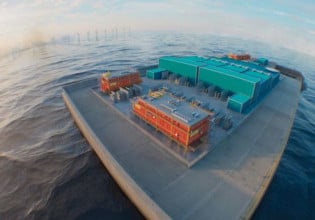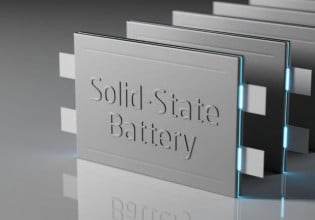Dynex Power Inc. announced its financial results for the year ended December 31st, 2012 included revenues of $39.6 million compared with $36.0 million for the previous year. Although the year started with a strong order book that led to a good first half performance, management’s guidance that the second half of the year would be more challenging, with delays to high speed rail projects in China and a weak economic environment in Europe, proved well founded.
The gross margin in 2012 was 17.0%, compared to 23.9% last year. The decrease reflected a shift towards lower margin products and intense price pressure, both characteristic of the very competitive near-term marketplace. The business is still building for sustained long-term growth and a decision was taken to protect the production, engineering and operational resources to support this expected future growth, rather than to make short term cuts in these costs. This decision has an adverse impact on the gross margin in the short-term but leaves the Group better positioned to generate enhanced returns when market conditions improve.
Revenue for the year of $39.6 million showed 10% growth over the preceding year, driven by strong growth in power modules and service revenue and a smaller increase in bipolar discrete revenue, while partially offset by declines in power assemblies and integrated circuit revenues. Revenue for the Power Module Group increased 63%, establishing another record. This Group now accounts for 38% of total revenues. Revenue from Services, which relates to advice and assistance provided primarily to CSR Times Electric, increased fivefold, albeit from a low starting point.
Revenue for the Bipolar Discrete Group grew by 5%. This Group remains the largest single group, accounting for 47% of total revenue. Revenue for the Power Assemblies Group declined by 36%, reflecting the poor economic conditions in Europe. Revenue for Integrated Circuits declined by 83% as remaining stocks of the main products were depleted, in line with Dynex’s strategic direction.
Apart from maintaining headcount levels, controllable expenses were kept under tight control, increasing by 7% compared to 2011, much lower than the increase in revenue. Expenses in 2012 represented 13.9% of revenue, compared to 14.3% last year. Excluding the cost of research and development, which management regards as investment in the future of the business, expenses fell from 13.2% of revenue in 2011 to 11.1% of revenue in 2012.
Dynex generated profit before tax of $1.2 million, down from $3.5 million in 2011. The reduction reflected the decision to maintain sales momentum at the expense of near-term margins. As a result of the lower profit before tax and the company’s success in claiming additional tax deductions in the UK, the tax charge fell by 78% to $167,000. The rate of tax paid on profit before tax fell from 21.6% to 13.6%. As a result, the Company generated a net profit in 2012 of $1.1 million, down from the $2.7 million reported in the previous year.
New orders received in 2012 totaled $38.4 million, resulting in a book to bill ratio of 1.0 times. The order book rose slightly from $19.7 million at the end of 2011 to $20.4 million at the end of 2012. Most of this increase results from a weakening in the value of the Canadian Dollar against Sterling. The order book at the end of 2012 represented 27 weeks of sales at the current revenue levels.
Dr. Paul Taylor, President and Chief Executive Officer commented, “The past year has been the most challenging during my tenure. A strong order book at the end of 2011 ensured that the year started well. But the well publicized delays in the high speed rail projects in China and the continuing poor economic situation in Europe meant that new orders were slow to arrive. We achieved 10% revenue growth over 2011 but the trend was not as good as we would have wanted, and, as a result, annual revenue was below the level that the business is now positioned to deliver. Management remains confident in the medium and long term future of the business and so took a decision not to make short term cuts to the production, engineering and operational resources of the business. In a press release issued on February 20th, 2013, we indicated that these difficulties were continuing into the first quarter of 2013 and that we expected to operate below break-even during that period. However, we also stated that we saw a strong recovery starting in the second quarter of 2013. Our view has not changed.â€
Bob Lockwood, Chief Financial Officer commented, “As Paul has indicated, 2012 started well but became more challenging as the year developed. This adverse trend continued in the first quarter of 2013, but we do see it as being the turning point. We received a high level of orders in the last three quarters of 2012 and this has continued so far in 2013. Delays in the start of some of these orders means that it will be the second quarter of 2013 before we see a return to growth in profitability. The overall result in 2013 is likely to be much the same as in 2012, but the rising trend in results provides a much better environment to that experienced in 2012, while boding well for 2014 and beyond.â€Mr Li, Chairman of Dynex and General Manager of CSR Times Electric concluded, “The past year has been a frustrating one for Dynex, reflecting the tough and very competitive markets being faced in many parts of the world. It will be good to see quarterly growth returning in 2013. I remain confident in the medium and long term future of the business.â€






